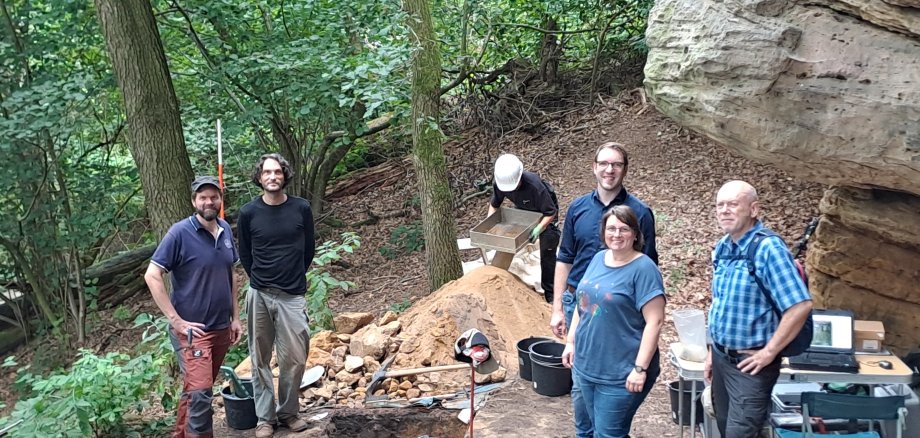Geopark GrenzWelten: Excavations at the "Hollenkammer" near Lütersheim
The GrenzWelten National Geopark is not only known for its fossil finds such as Procynosuchus or Iguanodon or its spectacular rock formations such as Dörnberger Helfensteine or Ober-Werber Langenstein. Exciting archaeological discoveries are also being made time and again, indicating that the present-day Geopark area was inhabited thousands of years ago. The most recent such research - in the form of excavations - was recently carried out at the "Hollenkammer" near Lütersheim on the "Unteres Wattertal" geological trail with promising results.
The aim of the excavations was to find out whether sediments and artefacts from the Palaeolithic and Mesolithic periods have been preserved in the vicinity of the "Hollenkammer" sandstone formation and the "Backhaus" opposite. The people of the end of the last ice age and the early phase of our current warm period lived in nomadic hunter-gatherer groups. Experts from the Universities of Aarhus, Denmark, and Cologne have travelled together to the Lower Watter Valley for the research work. Archaeological evidence of human activity in the Palaeolithic and Mesolithic periods can mostly be found in the form of flint tools, including around the "Hollenkammer". Modern finds were discovered in the upper layers of the excavation: a fragment of a clay pipe and shards of probably medieval pottery. However, the deeper layers, especially on the side of the "Backhaus", actually contained flint finds that can be assigned to the early Mesolithic period, i.e. the beginning of our present warm period. With these "microliths" - comparatively small stone projectile inserts and their manufacturing remains - there is thus evidence that the Lower Watter Valley was used by humans long before they became sedentary. The finds are currently being analysed and will be presented in a publication next year by the two universities and the GrenzWelten National Geopark.
